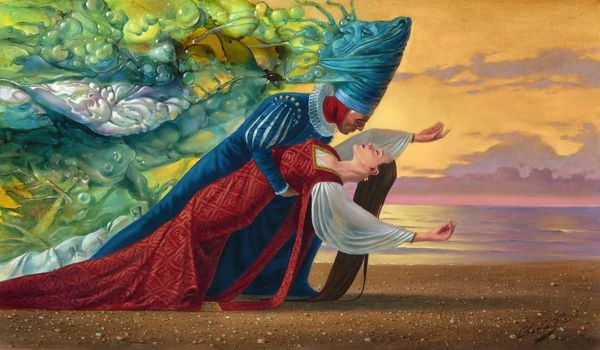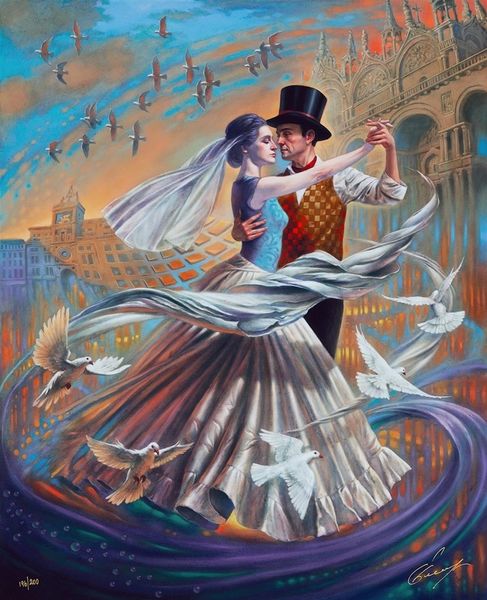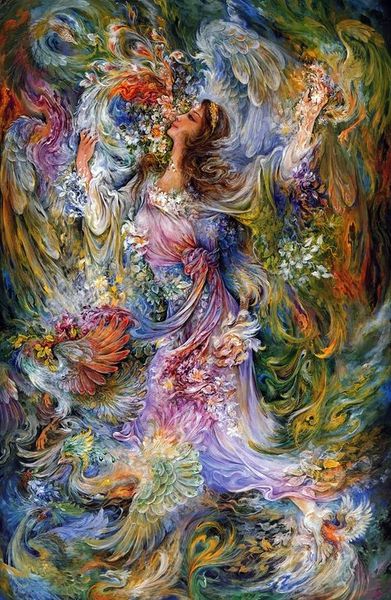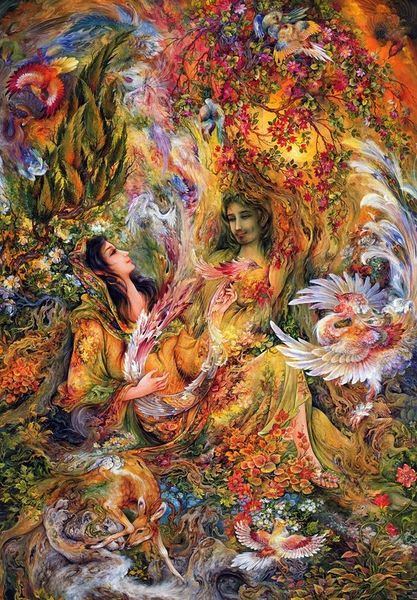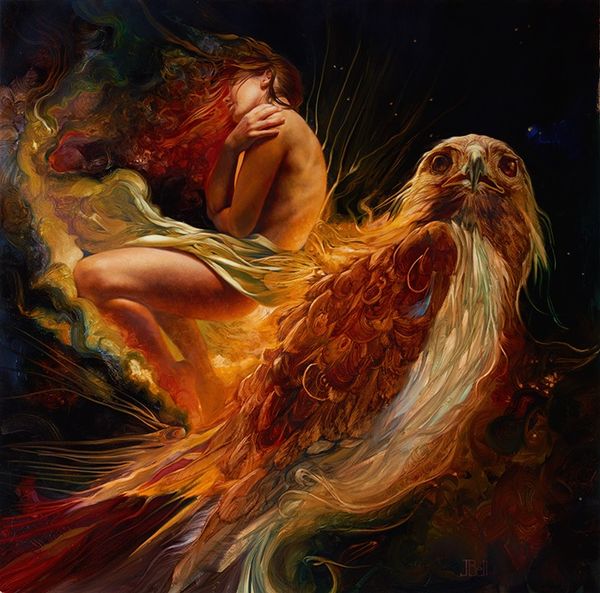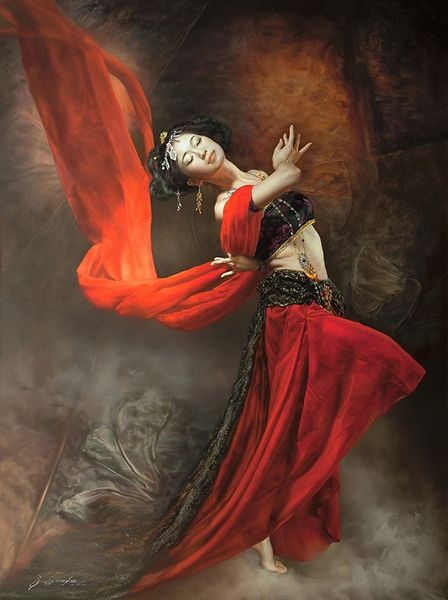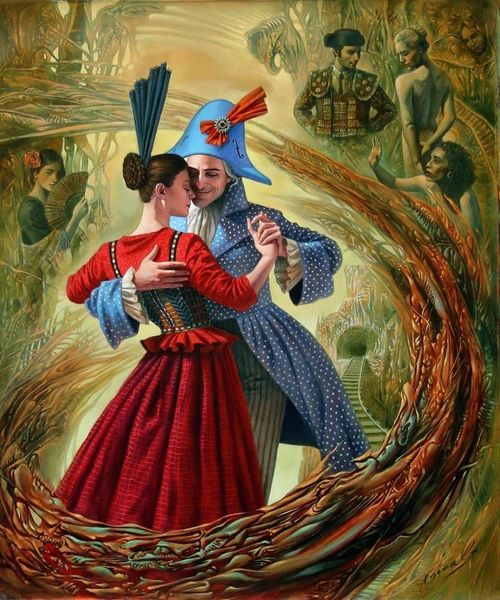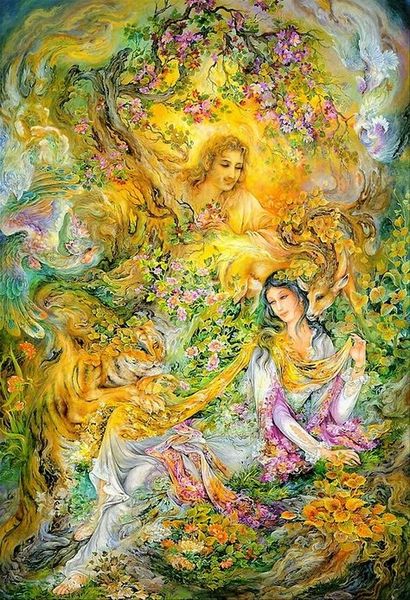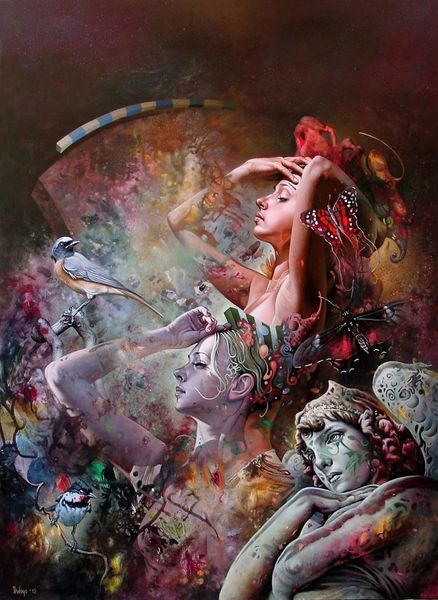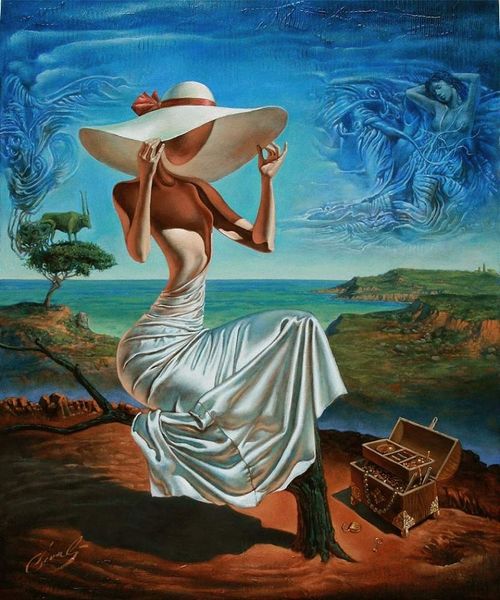
painting, acrylic-paint
#
portrait
#
painting
#
landscape
#
acrylic-paint
#
figuration
#
surrealism
#
surrealist
#
surrealism
#
portrait art
#
realism
Copyright: Modern Artists: Artvee
Curator: Michael Cheval’s acrylic painting, “Rabbit Hole Dance,” completed in 2018, presents us with a visually arresting scenario. What are your immediate thoughts? Editor: Well, the scene immediately strikes me as theatrical and dreamlike. The vibrant hues of red and blue against that strange tunnel backdrop create an unsettling, yet intriguing, composition. It’s a little bit off-kilter, somehow. Curator: Precisely! The spatial arrangement defies a conventional perspective. Note the dramatic contrast and saturated palette, reminiscent of stage lighting. Observe the rendering of light on fabric and skin. What does it evoke? Editor: It conjures a sense of performance, of artifice. These figures dressed as Harlequins, caught in mid-dance within what appears to be a rabbit warren—the scene is clearly symbolic, beyond the purely representational. There seems to be a lot to unpack regarding class structures and what role society sees fit. Curator: Indeed, Cheval, as a contemporary Surrealist, expertly plays with symbol and semiotics. These costumes reference archetypes from commedia dell'arte. The figures—these ‘clowns'— invite associations of illusion and hidden realities. Editor: Given the title, are those rabbits not just animals, but rather agents of this disruption. The location reminds us of the story of Alice going down the rabbit hole to a fantasy world and here these lovers are choosing the unknown. What message is the painter communicating through the dancers being surrounded by hares? Curator: These 'rabbits' echo both the narrative implication and formal structure, functioning within the larger context of artistic intentionality and expressive intent. They establish an important rhythm. Editor: Setting aside your close formal reading for a moment, one can’t ignore the historical echo. What does this costumed embrace actually say? And why? Where were these types of entertainers displayed in times of historical segregation? What about nowadays? What message are we teaching young visitors when displaying artwork like this without historical context? Curator: Those are valid interpretations, which nonetheless overlook the sophisticated interplay between representational figuration and abstracted ground. For instance, consider the textural treatment of the ‘rabbit hole’ itself... Editor: Still, the image’s power resides in its engagement with a broader cultural discourse—a dialogue surrounding identity and perhaps societal escapism. Curator: And, returning to form, how the piece transcends such historical considerations through a highly considered, carefully rendered composition... Editor: Yes, well, its interesting to see where these pieces of art history fit into today's historical canon. Curator: Exactly! A balanced viewpoint is required in every art viewing.
Comments
No comments
Be the first to comment and join the conversation on the ultimate creative platform.
